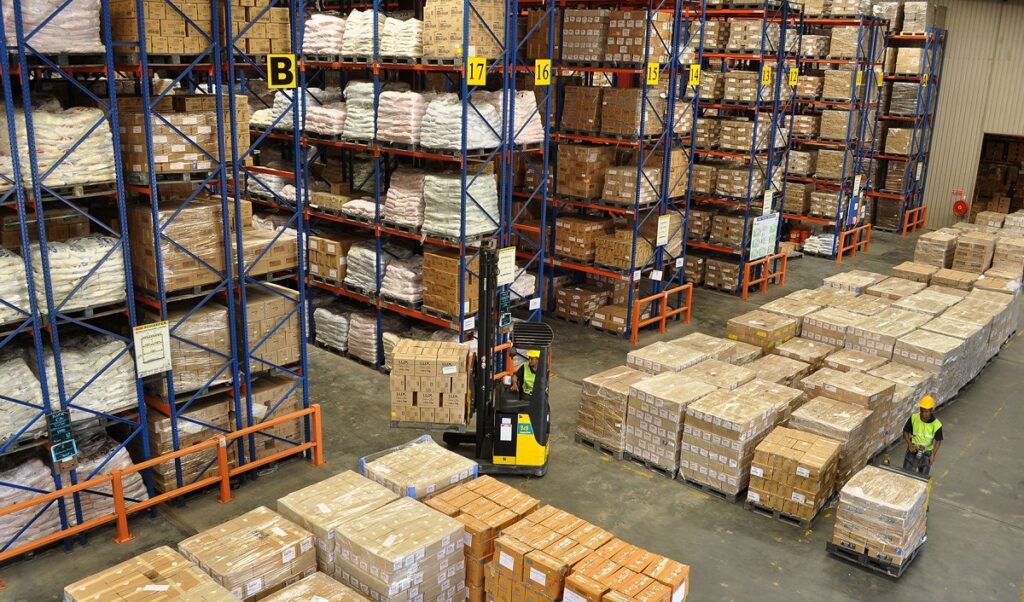
How Technology is Transforming Warehousing Services in India
India, with its burgeoning economy and ever-expanding market, has seen a significant transformation in its warehousing services due to technological advancements. Warehousing, a crucial component of supply chain management, is undergoing a revolution driven by innovations that enhance efficiency, reduce costs, and streamline operations. This article explores the various ways in which technology is reshaping warehousing services in India.
1. The Evolution of Warehousing in India
Traditionally, warehousing in India involved manual processes and basic infrastructure. Warehouses were often poorly managed with minimal automation, leading to inefficiencies in storage, inventory management, and distribution. However, the rapid growth of e-commerce, retail, and manufacturing sectors has necessitated a shift towards more sophisticated warehousing solutions.
2. Automation and Robotics
One of the most significant technological advancements in warehousing is the adoption of automation and robotics. Automated Guided Vehicles (AGVs) and robotic systems are increasingly being used to handle tasks such as sorting, picking, and packing. These technologies reduce the reliance on human labor, minimize errors, and speed up operations.
- Automated Storage and Retrieval Systems (AS/RS): These systems use robotics to automatically store and retrieve goods from shelves. They optimize space utilization and improve inventory accuracy.
- Robotic Picking Systems: Robots equipped with advanced sensors and AI algorithms can pick items from shelves with high precision, reducing the time and effort required for manual picking.
3. Internet of Things (IoT)
The Internet of Things (IoT) is another game-changer in warehousing. IoT devices, such as sensors and RFID tags, enable real-time tracking and monitoring of goods throughout the supply chain.
- Real-Time Inventory Management: IoT sensors can monitor inventory levels and conditions, providing real-time data that helps in managing stock efficiently. This reduces the risk of stockouts and overstocking.
- Enhanced Visibility: IoT devices provide complete visibility into the movement and condition of goods, allowing for better decision-making and quicker responses to issues.
4. Artificial Intelligence and Machine Learning
Artificial Intelligence (AI) and Machine Learning (ML) are transforming warehousing by enabling predictive analytics and optimization.
- Predictive Analytics: AI algorithms analyze historical data to forecast demand, optimize stock levels, and plan inventory more effectively. This helps in reducing carrying costs and improving service levels.
- Optimization Algorithms: Machine learning models optimize warehouse layouts, storage strategies, and order fulfillment processes, enhancing overall efficiency.
5. Warehouse Management Systems (WMS)
Warehouse Management Systems (WMS) have evolved significantly with technological advancements. Modern WMS solutions integrate with other enterprise systems to provide comprehensive management capabilities.
- Cloud-Based WMS: Cloud technology allows for scalable and flexible WMS solutions that can be accessed from anywhere. This enhances collaboration and improves data accessibility.
- Real-Time Analytics: WMS solutions offer real-time analytics and reporting, providing insights into warehouse operations and performance metrics.
6. Big Data and Analytics
Big Data analytics is playing a crucial role in warehousing by providing insights that drive strategic decision-making.
- Operational Efficiency: Analyzing large volumes of data helps in identifying inefficiencies and bottlenecks in warehouse operations. This enables continuous improvement and process optimization.
- Customer Insights: Big Data analytics provides valuable insights into customer preferences and buying patterns, allowing for better inventory management and targeted marketing strategies.
7. Sustainable Practices
Technology is also contributing to more sustainable warehousing practices. From energy-efficient systems to waste reduction, modern technologies are helping warehouses operate in an environmentally friendly manner.
- Energy Management Systems: Advanced energy management systems monitor and control energy consumption, reducing operational costs and carbon footprint.
- Green Technologies: Innovations such as solar panels and energy-efficient lighting are being integrated into warehouse infrastructure to promote sustainability.
8. Challenges and Future Outlook
Despite the many benefits, the adoption of technology in warehousing comes with its own set of challenges.
- High Initial Investment: The cost of implementing advanced technologies can be high, which may be a barrier for small and medium-sized enterprises.
- Skill Gaps: There is a need for skilled personnel to operate and maintain sophisticated technologies, which can be a challenge in a rapidly evolving industry.
Looking ahead, the future of warehousing in India is likely to be characterized by further advancements in technology. Emerging technologies such as autonomous drones for inventory management, blockchain for enhanced security, and advanced data analytics will continue to drive transformation in the sector.
9. Conclusion
Technology is revolutionizing warehousing services in India, offering numerous benefits including increased efficiency, cost savings, and improved inventory management. As the industry continues to evolve, embracing technological innovations will be crucial for businesses aiming to stay competitive and meet the growing demands of the market. With ongoing advancements, the future of warehousing in India promises to be more dynamic and technologically sophisticated than ever before.